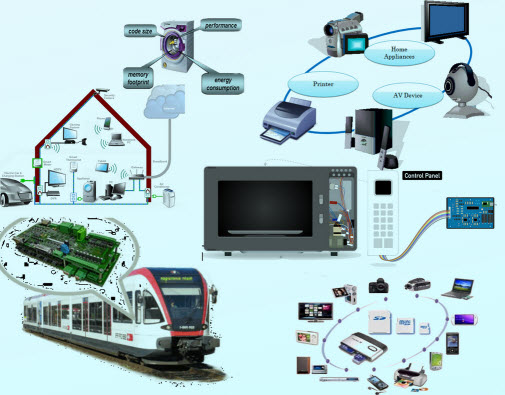Embedded System
The embedded system consists of three types of hardware components and a user interface. First, we have the sensors. Numerous passive and active sensors are used to monitor the patient’s activities and location within the home. Second, a number of small, custom battery powered embedded devices are responsible for reading the statuses of sensors strategically placed in the home and wirelessly transmitting this information. They are called sensor nodes due to their direct connection to the sensors in the system. The last hardware component in the system is a central computational node called the central server. This unit receives the wireless transmissions from the sensor nodes and performs activity recognition on this data. The raw sensor data as well as the results of activity recognition are made visible to the user through a web interface hosted by the central server. For security purposes, all the patient’s data is stored within their home
Advantages and Disadvantages
An advantage of the system is the ability to track eating behavior, localize with a high resolution, and provide the information for remote viewing in a single solution. Providing this information without requiring the patient to wear a sensor is very beneficial for applications in homes of persons with dementia. It is common for dementia patients to refuse to wear sensors on their body due to unfamiliarity or even paranoia. This is extremely beneficial during a panic episode where dementia patients will remove foreign objects from their body, rendering useless
a system that utilizes an on-body sensor. A disadvantage of the current approach to eating detection is the inability to state with certainty that eating has occurred. The system currently monitors the actions commonly performed before eating but can not detect the eating action itself. In addition, the proposed system does not support learning a patient’s normal behavior for the purpose of detecting abnormalities in their behavior, such as frequent bathroom visits or going to bed later than usual. Live alerts sent to the caregiver in the event of an abnormal behavior are also not offered by the system
Remote Monitoring Systems
Thanks to the advancements of technology, systems with the ability to monitor activities in the home are not rare. However, systems that apply these abilities to better the lives of persons suffering from some form of dementia or cognitive disability, and the individuals that care for them, are not so common. This chapter will discuss four such products. The first, Philips Lifeline, is an assistive technology for seniors living on their own at home. The second product, BeClose, provides activity tracking of an individual and is marketed towards senior citizens and persons with dementia. The third, QuietCare, is a commercial product created by Living Independent Group later purchased by Care Innovations, LLC, an Intel-GE company. The fourth, CareAlert, is a product offered by CareGenesis Corporation aimed at assisting the caregivers of patients with dementia.
CareGenesis CareAlert
The CareAlert is a wireless in-home monitoring system tailored specifically to assist the needs of cognitively-impaired individuals and their primary caregivers. Wireless sensors mounted in strategic locations throughout the home monitor the location of the patient and their movements. It also monitors the presence of the patient in their bed and records their time in and out of bed.The CareAlert system operates in two modes: day mode and night mode. In night mode the system provides live notifications to the in-home central station of the system to alert the caregiver of the patient’s bed exits, location, and time out of bed. These notifications are effective in preventing falls of frail patients after night-time bed exits. In day mode, this information is recorded and available for replay when the caregiver returns to the home. The CareAlert system cannot provide alerts to a caregiver when the patient is in the home and the caregiver is not. The capabilities of remote notifications and monitoring are not available in this system. The proposed system offers the capability to view the patient’s activities from anywhere in the world so long as the viewer has an Internet connection.
http://scholarcommons.usf.edu/cgi/viewcontent.cgi?article=6743&context=etd



